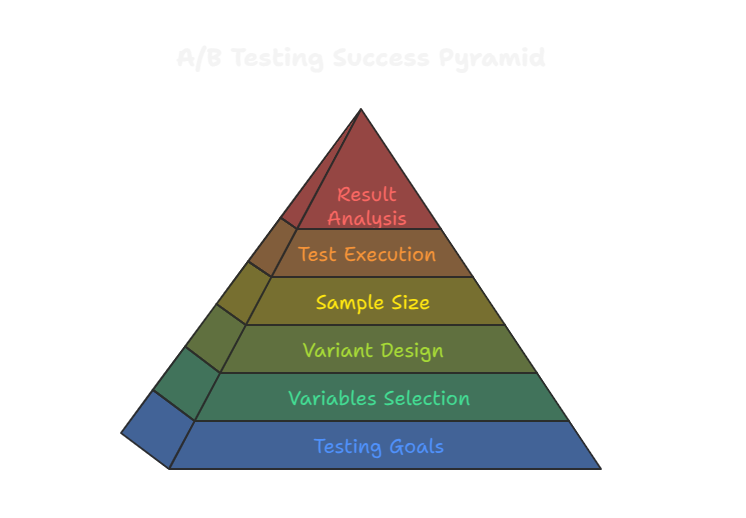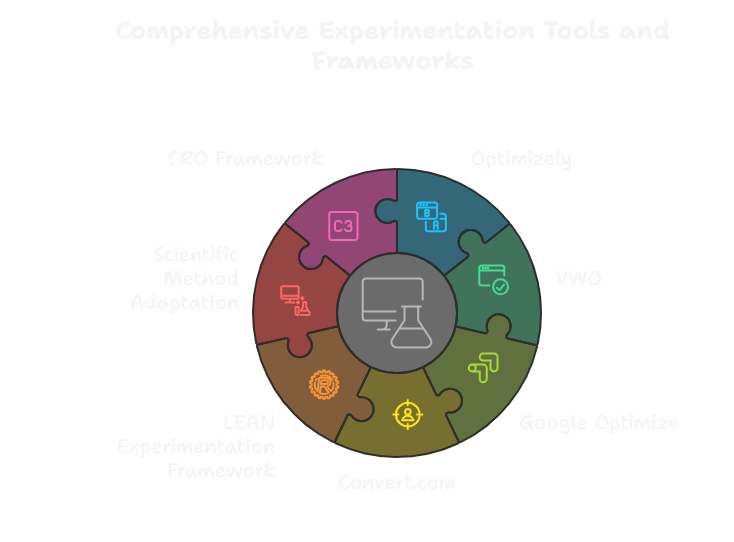Ever wondered why 65% of B2B marketing teams struggle to prove the real impact of their product offerings? In the rapidly evolving world of tech marketing, guessing is no longer an option—data-driven experimentation is the new strategic imperative.
Marketing and product managers are constantly under pressure to validate their go-to-market strategies without burning through limited budgets or risking critical market positioning. Traditional approaches of launching products based on intuition or generic market research are quickly becoming obsolete. What if you could systematically test and refine your offerings with precision, reducing uncertainty and maximizing your product's market potential?
A/B testing emerges as the breakthrough methodology that transforms speculation into strategic insight. By implementing controlled, measurable experiments, you can uncover exactly what resonates with your target audience, optimize conversion rates, and make informed decisions that drive tangible business results.
A/B testing is a strategic experimentation method where two versions of a marketing element—such as a product landing page, email campaign, or pricing model—are simultaneously compared to determine which performs more effectively. Think of it as a controlled scientific approach to marketing, where you create two variants (A and B) and expose them to similar audience segments to measure their comparative performance.
For B2B tech companies, A/B testing becomes a critical capability that transforms subjective decision-making into objective, data-driven strategy. By systematically testing different aspects of your product offers—from messaging and design to pricing structures and call-to-action buttons—you gain precise insights into what truly motivates your potential customers.
The power of A/B testing lies in its ability to minimize risk and maximize market intelligence. Instead of launching a full campaign based on assumptions, you can validate each element incrementally, reducing potential waste of resources and increasing the likelihood of successful market penetration. Marketing and product managers can leverage these insights to make surgical improvements that directly impact conversion rates and revenue potential.
B2B tech companies operate in a market where precision can mean the difference between breakthrough success and missed opportunities. A/B testing isn't just a marketing technique—it's a strategic approach that directly translates to bottom-line performance.
Despite its potential, many B2B teams stumble in A/B testing by:
Successful A/B testing demands a disciplined, strategic approach that transforms raw data into actionable marketing intelligence.

Start by establishing precise testing goals. Determine exactly what aspect of your offer you want to improve—whether it's conversion rates, engagement, or customer acquisition.
Identify the specific elements of your offer that can significantly impact customer decision-making. Focus on high-impact variables such as:
Pro Tip: Prioritize variables with the potential for substantial impact. Test one primary variable at a time to ensure clean, interpretable results.
Create two distinct versions of your chosen element, ensuring each variant has a meaningful difference that could influence customer behavior.
Calculate the appropriate audience segment and test duration to ensure statistically significant results:
Pro Tip: Most B2B tests require 2-4 weeks to gather meaningful data. Avoid premature conclusions.
Implement your A/B test using robust analytics tools. Randomly distribute your audience between variant A and variant B, tracking key performance indicators:
Mistake to Avoid: Don't interfere with the test midway or make assumptions before collecting complete data.
Carefully review the test outcomes, looking beyond surface-level metrics to understand deeper customer insights. Use statistically significant findings to inform future marketing strategies.

Optimizely
A comprehensive experimentation platform that enables marketing teams to run sophisticated A/B tests across websites and mobile applications. Perfect for B2B tech companies seeking robust statistical analysis and real-time experiment management.
VWO (Visual Website Optimizer)
User-friendly testing tool that provides intuitive visual editors, allowing non-technical marketers to design and implement experiments quickly. Offers heat mapping and conversion tracking specifically tailored for complex B2B sales funnels.
Google Optimize
Free tool integrated with Google Analytics, ideal for SMBs and startups looking to begin A/B testing without significant upfront investment. Supports website and landing page experiments with straightforward reporting.
Convert.com
Enterprise-grade testing platform with advanced segmentation capabilities, enabling precise audience targeting and multi-page experiment designs crucial for intricate B2B marketing strategies.
LEAN Experimentation Framework
Derived from lean startup methodologies, this framework emphasizes rapid hypothesis testing, minimal resource allocation, and continuous learning. It encourages marketing teams to treat each experiment as a structured learning opportunity rather than a binary success/failure scenario.
The Scientific Method Adaptation
A rigorous approach that transforms marketing experiments into scientific investigations. By formulating clear hypotheses, controlling variables, and maintaining statistical discipline, B2B teams can generate insights with academic-level precision.
Conversion Rate Optimization (CRO) Framework
A systematic process focusing on incrementally improving conversion metrics through structured experimentation. This framework helps teams prioritize testing opportunities based on potential business impact and resource requirements.
Pro Tip: No single tool or framework fits every scenario. Select and combine approaches that align with your specific business objectives, technical capabilities, and resource constraints.
Successful A/B testing of offers is not a one-time event but a continuous strategic process that demands rigorous methodology, data-driven insights, and a commitment to iterative improvement. By systematically experimenting with different elements of your value proposition, pricing models, and engagement strategies, B2B tech companies can unlock powerful competitive advantages that transform market performance. The key lies not just in conducting tests, but in developing a holistic experimental culture that embraces data, challenges assumptions, and continuously refines go-to-market approaches. Remember that true optimization is a journey of incremental gains, where each test provides nuanced insights that collectively drive significant business impact, ultimately enabling your organization to develop offers that resonate deeply with target customer segments and differentiate your solution in an increasingly complex marketplace.